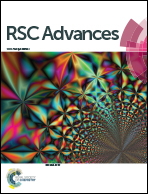Role of the oxidizing agent to complete the synthesis of strontium aluminate based phosphors by the combustion method
Abstract
The influence of processing parameters on the phase formation of strontium aluminates doped with Eu2+ and Dy3+ by the combustion method has been evaluated. The addition of a slight excess of urea as a fuel has an important effect on the phase formation, but a larger amount of urea inhibited the strontium incorporation into the stuffed tridymite-like structure. The experimental results show that it is possible to incorporate a larger amount of urea than the theoretical one by adding nitric acid as an oxidizing agent. The presence of an oxidizing agent promotes both effective chelation of the cations and a higher crystalline order on strontium aluminate. Nanostructured lamellar particles have been obtained in a single step and the particles are well crystallized. The combustion method avoids the standard requirements of post-thermal treatments in a reducing atmosphere to promote the appearance of Eu2+ cations. A higher amount of urea in the presence of the oxidizing agent produces strontium aluminate particles with higher phosphorescence brightness, owing to the increase of the reduction process Eu3+ to Eu2+. The luminescence properties correlate with the crystallite size of the strontium aluminate. The results demonstrate a pathway to obtain phosphorescent pigments with sizes down to 10 μm.


 Please wait while we load your content...
Please wait while we load your content...